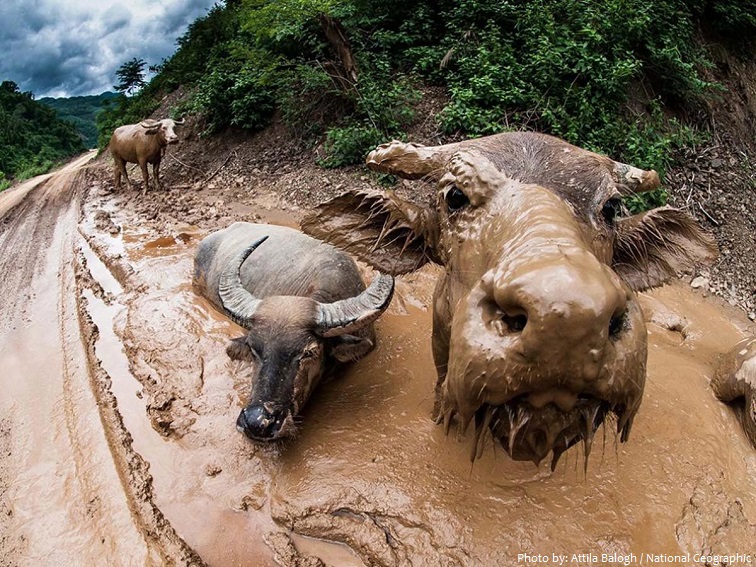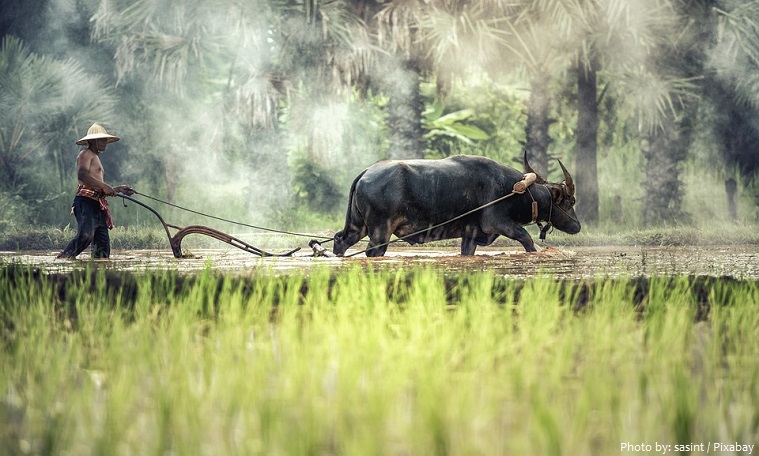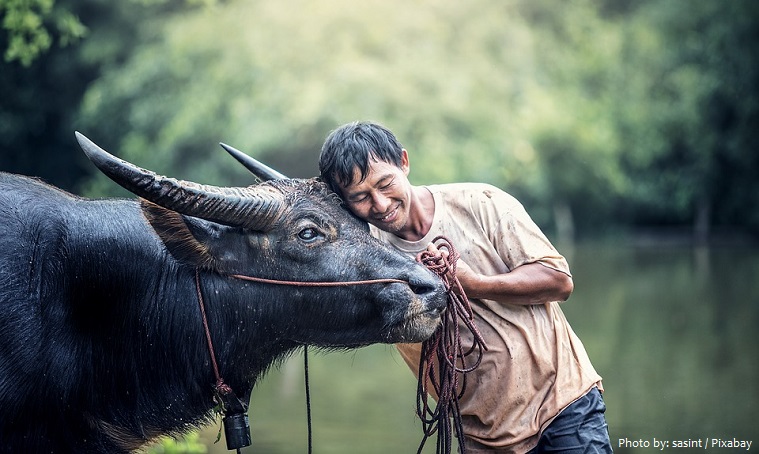The water buffalo also called Asian buffalo and Arni is a large bovid.
This animal originating in South Asia, Southeast Asia, and China.
Today, it is also found in Europe, Australia, South America and some African countries.
Water buffalo were domesticated in Indian subcontinent about 5000 years ago, and in China about 4000 years ago. Two types are recognized, based on morphological and behavioural criteria – the river buffalo of the Indian subcontinent and further west to the Balkans and Italy, and the swamp buffalo, found from Assam in the west through Southeast Asia to the Yangtze valley of China in the east.
There are 74 breeds of domestic water buffalo numbering some 165 million animals, but only small numbers of wild water buffalo remain.
The water buffalo is the “living tractor of the East.” It is not rare to find buffalo that continue to work well at the age of 30, and instances of a working life of 40 years are recorded.
It is the largest member of the Bovini tribe, which includes yak, bison, African buffalo, various species of wild cattle, and others.
Height at withers is from 129 to 133 cm (51 to 52 in) for males, and from 120 to 127 cm (47 to 50 in) for females. They range in weight from 300 to 550 kg (660 to 1,210 lb), but weights of over 1,000 kg (2,200 lb) have also been observed.
The skin of river buffalo is black, but some specimens may have dark, slate-colored skin. Swamp buffalo have a grey skin at birth, but become slate blue later.
River buffalo have comparatively longer faces, smaller girths, and bigger limbs than swamp buffalo. The tail in both species is short, reaching only to the hocks
Horns in both species and in both sexes curve backward in a crescent. The record horn length is just under 2 meters (6.6 feet) — the longest among cattle or any other bovid, although in domestic forms the horns are shorter or even absent.
In general, water buffalo are found in lower elevations, but in Nepal, swamp buffalo can commonly be found at elevations of 2,800 meters (9,185 meters). Domesticated animals are widespread, and therefore are found in a wide variety of habitats. The majority of the domesticated water buffalo are found in agricultural communities, but they can also be found in many cities.
Water buffalo are both diurnal and nocturnal. They are more sensitive to heat than most bovids because they have fewer sweat glands. Thus, water buffalo are known for wallowing in mud. Wallowing in mud helps to cool the animal because water in mud evaporates more slowly than just water alone, thus extending the period of cooling. Wallowing also serves to cake the animal with mud, which protects it from biting insects.
Water buffalo is a ruminant and is predominately a grazer on grasses. It also eats herbs, aquatic plants, leaves, agricultural crops, and various other vegetation that grows in or along rivers and streams.
Females normally produce calves every other year, after a gestation of 9 to 11 months.
Like cattle, domestic water buffalo have many uses.
They are especially suitable for tilling rice fields, and their milk is richer in fat and protein than that of dairy cattle.
Buffalo milk is traditionally used in Italy to make mozzarella cheese.
The swamp buffalo has 48 chromosomes; the river buffalo has 50 chromosomes. A chromosome is a deoxyribonucleic acid (DNA) molecule with part or all of the genetic material (genome) of an organism.
Water buffalo and the African Cape buffalo diverged from yaks and bison about three million years ago.
Wild water buffalo are now very rare. It is thought that less than 4,000 remain and their numbers are declining. Some of the problems are illegal hunting, loss of habitat, introduced diseases and parasites, and interbreeding with domesticated buffalo.
Tigers are the only other predator on water buffalo, though water buffalo are challenging prey even to so large a cat. When confronted by a tiger, water buffalo often stand together as a herd and charge together in a line. They are usually successful at driving tigers off, and water buffalo have been known to kill tigers with their horns. Tigers often have their success stalking single animals and focusing on juveniles.
Some ethnic groups, such as Batak and Toraja in Indonesia and the Derung in China, sacrifice water buffalo at several festivals.
In Chinese tradition the domestic buffalo is associated with contemplative life.





